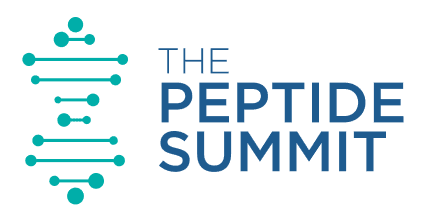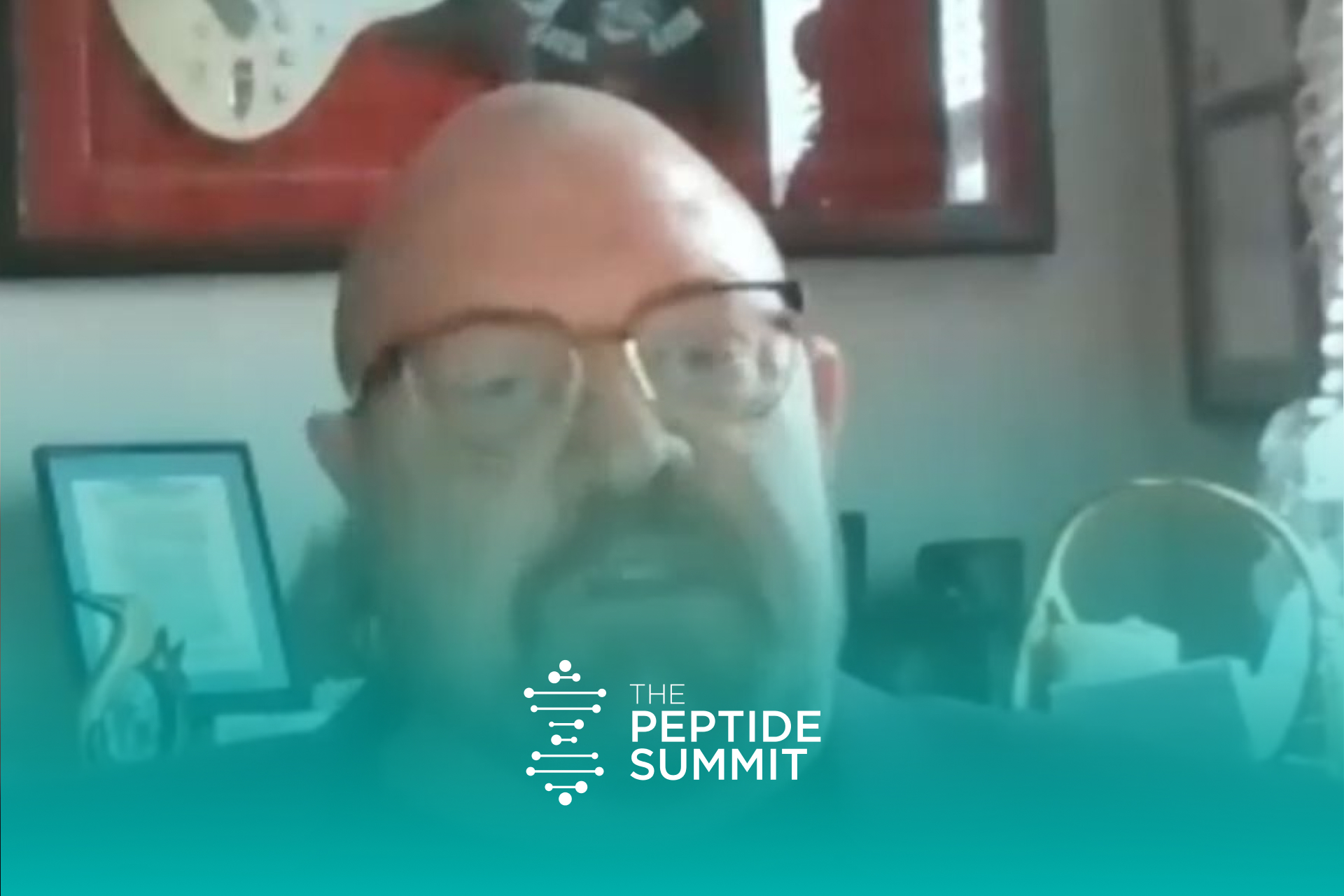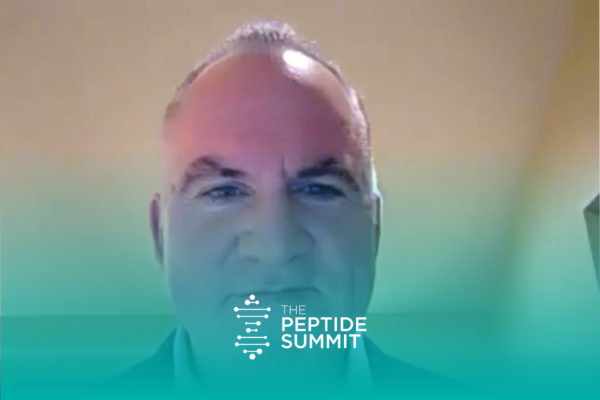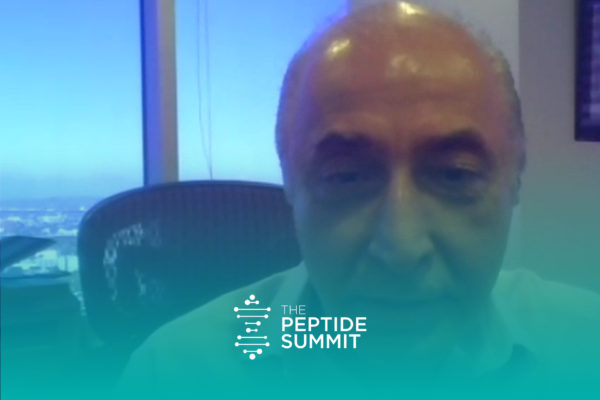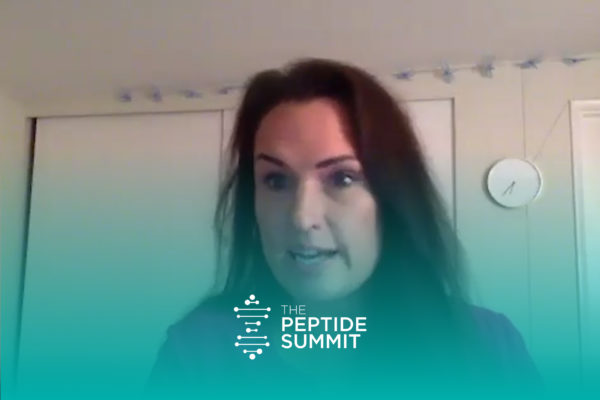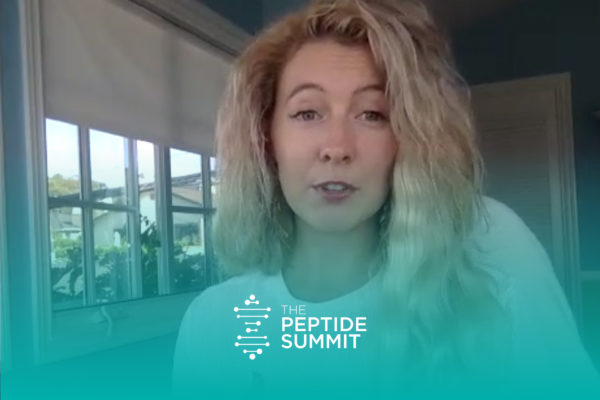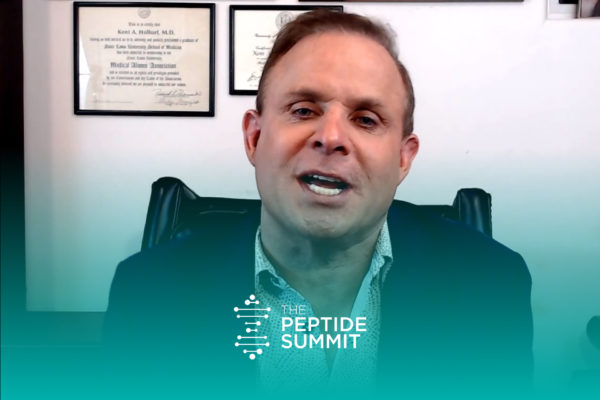Join the discussion below
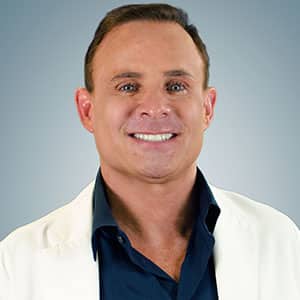
Kent Holtorf, MD is the medical director of the Holtorf Medical Group (www.HoltorfMed.com) and the founder and medical director of the non-profit National Academy of Hypothyroidism (NAH) (www.NAHypothyroidism.org), which is dedicated to the dissemination of new information to doctors and patients on the diagnosis and treatment of hypothyroidism. He is... Read More
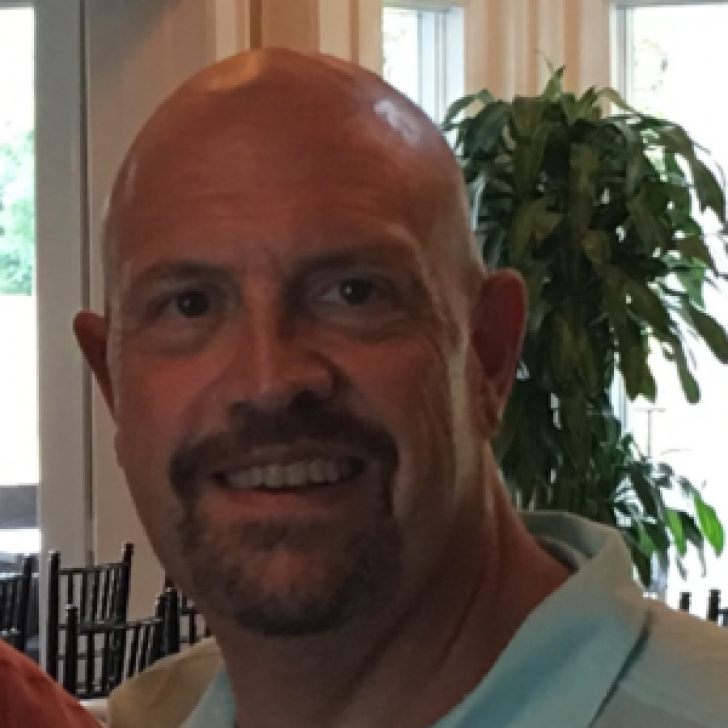
In 2002 I was lucky enough to have a representative from one of the major joint replacement companies roll a centrifuge into my operating room. I was told, while I was performing surgery, the anesthesiologist could draw the patients’ blood and it could be processed. By the end of the... Read More
- How to use PRP for everything from facelifts and ED to sports injuries and hair loss
- The exact number or platelets you need to see results
- The #1 secret to successful PRP therapy
Related Topics
Achilles Tendon Repairs, Adult Reconstruction, Bad Hip, Bad Knee, Bpc, Cheeks, Collagen Formation, Cytokines, Erectile Dysfunction, Gerd, Golfers Elbow, Growth Factors, Hair, Healing, Joint Replacements, Joints, Knee Replacement, Ligaments, Natural Medicine, O-shot, Orgasm, Orthopedic Surgery, Orthopedics, Penis, Peptides, Platelet Rich Plasma, Prp, Regenerative Medicine, Rotator Cuff Repairs, Spine Fusions, Sports Medicine, Stem Cell Medicine, Stress Incontinence, Surgical Wounds, Tendons, Tennis Elbow, Urinary Stress Incontinence, Urogynecology, Vaginal Wall, Workman Comp, WrinklesDr. Kent Holtorf:
Hello this is Dr. Kent Holtorf with another episode of the Peptide Summit. Today we’ll be speaking with Dr. Piccirillo, and he’s going to talk about what is the perfect PRP. Dr. Piccirillo, thank you for being on and taking the time.
Dr. Jeff Piccirillo:
Thanks so much for having me. I think your Peptide Summit is amazing. I think it’s a great forum for doctors to learn, especially doctors that want to think outside the box. There’s so many doctors out there that are depending on Big Pharma to get their patients better, and that’s definitely not the way to go. So I love your forum.
Dr. Kent Holtorf:
Yeah, studies show that [inaudible 00:00:40] internal medicine showed most doctors practicing 10, 20 years behind, the available medical literature, it takes on average 17 years for a proven new therapy to be accepted to mainstream medicine, unless it’s a new drug with a sales force.
Dr. Jeff Piccirillo:
Right. No, absolutely.
Dr. Kent Holtorf:
Awesome, so a little bit about Dr. Piccirillo. Board Certified Orthopedic Surgeon who developed an interest in platelet rich plasma, know as PRP. The first time a centrifuge rolled into his operating room in 2002. He attended medical school at Philadelphia College Osteopathic Medicine, graduating valedictorian, pretty impressive, in 1989. He continued his training at Chicago Osteopathic Medical Center in Orthopedic Surgery from 1989 to 2004 and then entered into private practice. He’s practiced general orthopedics with an interest in adult reconstruction and sports medicine. He served a team position for a number of high schools and colleges. In 2002 a representative from one of the major joint replacement companies brought a new centrifuge into his operating room, his love for regenerative medicine and PRP began.
Dr. Kent Holtorf:
In 2009 he switched from a surgical practice, and that’s major, we see a lot of surgeons and things, they give up a lucrative practice because they basically see a different way. It’s like in The Matrix, take the red pill, once you take it you can’t go back, because you see what’s better. And really started on regeneration, regenerative medicine and not replacement and a totally different mindset.
Dr. Kent Holtorf:
As protocols and products evolved, began consulting other practices and becoming a teacher on really how to practice regenerative medicine. He put a chapter entitled Stem Cell Medicine: What Does the Future Hold in Dr. Judson Brandeis book, may have butchered that, Optimizing Manhood, which will be released in early 2021. He has a new book out The Perfect PRP, and we’ll talk about that.
Dr. Kent Holtorf:
He’s married, with a daughter in Chicago, and son at Hogan, Florida. When he’s not teaching in the United States and around the world, you’ll find him in his garden, or right in the front of his computer. I hear you on that. And he just finished a follow-up book, and we’ll get into that as well.
Dr. Kent Holtorf:
So, great. You got into regenerative medicine. What prompted that?
Dr. Jeff Piccirillo:
I think it was a combination of two things. I always joke and say part of it was a midlife crisis, which it may have been. Around 2007 and 2008 I started getting bored with the basic practice of adult reconstruction. And we were doing a lot of knee replacements and a lot of hip replacements, but it started to see kind of like factory work. 2002, one of the major joint replacement companies had got into the PRP world, and they rolled a centrifuge into my operating room, and they asked me if I would try it out. And the only stipulation was, they told me, while I was doing surgery, anesthesia would draw some blood, they’d spin it in the machine, and at the end of the case they’d hand me vial of growth factors and cytokines that were derived from the patient’s blood. And I said, “Sounds great to me.” And they said, “You just put it in your bone graft and you can add it to your joint replacements and your spine fusions. And we just want you to collect data and see if you get better results.
Dr. Jeff Piccirillo:
And so we did that for a while, and we saw great results. And so then I said, “You know what? I just want it drawn on every case. If I’m making an incision, I want to use it.” So I started putting it in rotator cuff repairs, and achilles tendon repairs, and tennis elbow, and if I didn’t have anywhere else to put it, I’d inject it in the edges of my surgical wounds to see if they healed faster. And sure enough, they did. We had great results.
Dr. Jeff Piccirillo:
And so I asked them for a second centrifuge in 2007 to put in my office. And we started playing with it in the office. We started injecting pretty much anything we thought we could inject with PRP, just to see if it would work. And at that point we weren’t even thinking about monetizing it and charging patients for it. We were just doing it and trying to collect data and get results. And then mid portion of 2008 one of my billing girls walked into my office and showed me an EOB from a major insurance company, where they were paying the under $900 for a knee replacement. And I realized that it was the time to get out. I was losing money, the insurance companies didn’t care, and so I fired all my insurance companies and I went cash, January 1 of 2009, and never looked back.
Dr. Kent Holtorf:
That was probably a little scary. How was that transition and what could you… I know there’s a lot of surgeons thinking, but it’s scary.
Dr. Jeff Piccirillo:
Definitely that’s not the way to do it.
Dr. Kent Holtorf:
It’s like sink or swim style.
Dr. Jeff Piccirillo:
Fire everybody and jump in. I think back to high school, when I think of Cortez went to Mexico to discover Mexico for Spain, and they had to fight the Aztecs and his crew said, “Well, we’re not fighting.” And he said, “Yeah, you are.” And he burned the boats. So pretty much what I did is I set my boats on fire, and I didn’t have a choice other than to make it work. But it was kind of the perfect storm, because that was the same time that Heiz Ward for the Pittsburgh Steelers got a PRP injection in his knee, and was able to play in the Superbowl in 2009. And it made it on the pages of Sports Illustrated.
Dr. Kent Holtorf:
Isn’t it amazing how things like that happen, make such a difference.
Dr. Jeff Piccirillo:
Yeah, as long as you believe in somebody above, which I certainly do, God was looking out for me. So, I still took a huge hit the first year, didn’t make anywhere near what I made as an orthopedic surgeon, but year two was better, year three was better than that, and by year four I was replacing my surgery income by doing natural medicine and actually healing people, rather than replacing.
Dr. Kent Holtorf:
Nice. And in your transition did you market or was this word of mouth?
Dr. Jeff Piccirillo:
Well, back then we didn’t really have much internet, so yeah, it was mostly word of mouth. What I did was I went to two groups, I went to some of the Workman Comp carriers, because I thought maybe they had more interest in getting people better than the other insurance companies, and was able to do some stuff with them. And then I went to the country clubs, because A, I knew there was money there to pay for new treatments like this.
Dr. Kent Holtorf:
You were very proactive.
Dr. Jeff Piccirillo:
And so we went and we looked for people with golfer’s elbow and tennis elbow, and that’s kind of where it started. And then those people would come in and say, “Well I have a bad knee,” or, “I have a bad hip,” and we were then able to market to those people as well. A lot of times if they didn’t have the money to pay for it, or didn’t want to pay for it, we would just give it away free and get their results so they would tell somebody they had it, and then maybe get a paying customer. And it all worked over time, and by year four we were being very successful. It’s a great outcome.
Dr. Kent Holtorf:
I think it’s your passion. You know it works and you just keep going forward because you know it works. And we find that peptides are very synergistic with everything, very synergistic with PRP.
Dr. Jeff Piccirillo:
Oh absolutely
Dr. Kent Holtorf:
Yeah, we mostly do peptide injections, because they’re much easier to pull the blood, but once you get the PRP down, it’s not that hard. But I think certainly the combination, as usually with everything, is very synergistic. But we’re going to get working on adding some peptides and seeing how the combination works for them as well.
Dr. Kent Holtorf:
What types of things can PRP be used for?
Dr. Jeff Piccirillo:
Well, it’s a gamut. The title of my book is Perfect PRP: How to Improve Outcomes from Aesthetics
to Urology. And really, it runs the whole gamut. Dr. Charles Reynolds, who has become a great friend of mine, invented the vampire facial and vampire face lift, so obviously putting PRP on the face, you can increase collagen formation and get rid of wrinkles and build up the cheeks in somebody that looks aging. And you can use it in orthopedics for joints and tendons and ligaments. You can use it in Urogynecology to help get rid of urinary stress incontinence. You can use it in the penis for erectile dysfunction. So it really does run the gamut from A to Z.
Dr. Kent Holtorf:
Hair, hair too.
Dr. Jeff Piccirillo:
Hair, absolutely.
Dr. Kent Holtorf:
And how do you use it for incontinence?
Dr. Jeff Piccirillo:
So there’s an injection the Dr. Reynolds also invented called the O-Shot, which was initially invented for orgasm, but what he found out early on, a lot of the women, although they were having better orgasms, got rid of all their urinary stress incontinence. And the reason is, is the injection is in the interior vaginal wall, so now you’re building new collagen around the urethra, and it acts an an artificial sling, so it gets rid of the urinary stress incontinence.
Dr. Kent Holtorf:
Yeah. And same thing for stress incontinence, you look at the studies on BPC, just giving oral BPC dramatic reduction in stress incontinence, also for GERD. And what it does, some of the studies, they’ll induce basically sphincter failure with severe esophagitis, and then the give the BPC and it brings those sphincters back so they’re able to function again. So right thereDr. Jeff Piccirillo: That’s a great synergistic effect.
Dr. Kent Holtorf:
Yeah. That’s awesome. So lots of [inaudible 00:11:09] PRP is everywhere.
Dr. Jeff Piccirillo:
There’s no doubt.
Dr. Kent Holtorf:
And then prices, just throw darts at the dart board. What’s the difference?
Dr. Jeff Piccirillo:
Well, I think that’s the problem. When I set out to write my book, I wrote my book because if you start looking at the literature, if you go on Pod Med, and you put in PRP, you’re going to see 17,000 articles. And the problem is, they are all over the board. None of them compare apples to apples. So you couldn’t get a great perspective of what PRP could do. And the problem is, is there’s so many different PRP centrifuge systems out there, some are single spin centrifuges, some are double spin centrifuges. Some people were using ultrasound guide, and some people weren’t. Some people were prepping the patient, some people weren’t. So there was no great consensus of what was truly PRP. There was a really great article that came out almost 10 years ago by Dr. Steve Sampson in California, that really looked at scientifically looked at what the platelet count in PRP should be in order to get results. And what he found was, if there was under 5,000 platelets, it didn’t work. If it was over 2,000,000 platelets it was actually inhibitory and didn’t work.
Dr. Kent Holtorf:
Really?
Dr. Jeff Piccirillo:
And the sweet spot was a million to a million and a half platelets. And so unless you’re using a centrifuge that you can concentrate the platelets twice to get to that high level, a double spin centrifuge will typically give you between four and nine times the concentration of whole blood. And if you think about what a normal platelet count is, normal platelet count is going to be somewhere between 150,000 and 350,000. And that’s where those numbers come from. If you take 150,000 and you concentrate it nine times, you’re between a million and a million and a half. If you take 350,000 and you concentrate it four times, you’re between a million and a million and a half. But you need to be able to hit those numbers in order to get results.
Dr. Jeff Piccirillo:
And that was the problem in a lot of the literature. When I started looking at the articles on Pod Med is, you’d find two articles six months apart, one article would say they had 30 shoulders with partial rotator cuff tears and none of the 30 got better. But then when you dig down, they were using a single spin centrifuge, they weren’t concentrating the platelets high enough, and no wonder they didn’t get better. And then you look at the other one and they had 28 out of 30 get better, but they were using a double spin centrifuge, they were stopping the anti-inflammatory drugs first, they were really looking at the platelet count, and so they were doing everything right. And so that was the problem, is the literature was so random that you really couldn’t figure out what was really going on. So hence the reason I put a book together to go over that and get rid of some of those myths that are out there that PRP really doesn’t work.
Dr. Kent Holtorf:
Yeah. I think that’s a great explanation right there. And so you talk about really, also preparing the patient makes a huge difference.
Dr. Jeff Piccirillo:
Absolutely. That’s the key. When somebody asks me, “Well, what is perfect PRP?” And I’ve actually trademarked the name Perfect PRP as a method. So Perfect PRP has really not much to do with a centrifuge, it really doesn’t have much to do with joint injection technique, but what it really has to do with is preparing the patient for a period of three to four weeks prior to the injection to make sure that they are primed to have the best possible outcome. And the reason being, is we understand from the science of PRP, that when you inject PRP into the body, you need the body to respond.
Dr. Jeff Piccirillo:
The body needs what’s called a paracrine cascade reaction, which means what you’re essentially injecting is, once the platelets lyse, once the alpha particles open up and they release all their growth factors and cytokines, those are all signaling molecules, very similar to what peptides are. And those molecules will then go to the bone marrow and will signal the bone marrow to release stem cells to go to the area and cause healing. Well, there’s plenty of ways to increase your stem cell population, and to increase your circulating stem cells so they can go to the area and cause regeneration. And that’s what Perfect PRP is, it’s looking at making sure that you’ve stopped all the anti-inflammatory medications that the patient’s on. If the patient’s on an anti-inflammatory, then they’re not going to have a cascade reaction.
Dr. Kent Holtorf:
Sorry to interrupt, but I bet you a lot of patients are not told to stop that.
Dr. Jeff Piccirillo:
No, I’m sure. And if you look at the doctors that are out there that are trying to make money off of PRP, but are really not looking at the science and are just trying to jump on the bandwagon, they’re coming in, they’re drawing their blood, they’re injecting in the same day, they’re charging them a low price, but they’re not getting results. And the problem with that is, is now in that patient’s mind it’s PRP doesn’t work.
Dr. Kent Holtorf:
And they tell 10 people.
Dr. Jeff Piccirillo:
Right. And so that’s the hardest thing is to try to break that scenario. And you think about, well what’s anti-inflammatory? Yes, it’s all the Big Pharma drugs, but it’s also Turmeric, and [inaudible 00:16:53], and fish oil, those all have to be stopped for three weeks in order to get that paracrine cascade reaction so you can get great inflammation. And then you need stem cells. So what can help you bring stem cells to the area? Well, things like NAD. So if you have something that can boost NAD in the body, like an NAD precursor, like Nicotinamide, Mononucleotide, or Nicotinamide Riboside, those things, if you give those as a supplement they’re going to increase your stem cell production, so that’s going to help. Anything that’s going to boost nitric oxide will help.
Dr. Jeff Piccirillo:
There’s plenty of studies out there that diet can play a big role. If you put somebody on a fasting mimicking diet for five days prior to drawing their blood for their PRP, their stem cells will be increased by up to 600%. Now tell me, what do you think the response is going to be if you have 600% more stem cells when you give the PRP injection?
Dr. Kent Holtorf:
Yeah, very much. And studies show BPC 157 will increase growth hormone receptors and other growth receptors on the cells and the stem cells.
Dr. Jeff Piccirillo:
So there’s a perfect synergy between doctors that are doing peptides and doctors doing PRP. One of my really good friends is a regenerative physician down in Naples, Florida area, and also is a big peptide user as a consultant.
Dr. Kent Holtorf:
Everyone’s in Florida!
Dr. Jeff Piccirillo:
Yeah.
Dr. Kent Holtorf:
It’s interesting. Do you do stem cells with the PRP at all?
Dr. Jeff Piccirillo:
Oh, interestingly enough I’m not sure they’re any better than using PRP. Here’s my reasoning behind that.
Dr. Kent Holtorf:
And you wrote a chapter on stem cells, right?
Dr. Jeff Piccirillo:
I did. I wrote a chapter on stem cells and talked about what they hold and what they can do to the world, and especially as we move farther and farther into the future. And I think there is some use for them in regenerative medicine, but I think that if you do really good PRP, you can get very similar results.
Dr. Jeff Piccirillo:
If you look at the study that came out of Stanford in 2014 or 2015, where they actually did intracardiac stem cells, so they took stem cells from bone marrow, they tagged them with a radio nucleotide tracer, and then they injected them intracardiac through a cardiac path, and they went back in 48 hours to look for the stem cells, to look for the radiation. And there was only 0.6% left. So, why is that? Well, because we know when we inject it, most of those cells are going to lyse. And we know that none of them ever incorporate into the host, but what they’re doing is they’re going to spill their contents, and they’re going to spill all those signaling molecules, all those cytokines and growth factors, and they’re going to trigger the body’s own stem cells to go to the area and cause regeneration, and that’s what you need. You need that cascade, and whether you’re promoting that cascade with stem cell injections, you’re promoting that pathway with exosomes, you’re promoting that cascade with PRP, you’re still getting that great cascade reaction.
Dr. Jeff Piccirillo:
The key is making sure the patient as primed for it with diet, with stopping anti-inflammatories, with boosting nitric oxide, with adding some peptides to help boost stem cell growth and formation. That’s what you need in order to get that response, and that’s the key. The problem is, is there are so many doctors out there that aren’t doing that, that say they’re practicing regenerative medicine, but they’re not doing everything they can for the patient to make sure they get that great outcome.
Dr. Kent Holtorf:
Yeah, it’s kind of like lazy medicine.
Dr. Jeff Piccirillo:
Yeah.
Dr. Kent Holtorf:
One study was a heart failure study where there would give the stem cells and let them go to the heart, and the other ones they would block them from reaching the heart, no difference in outcomes.
Dr. Jeff Piccirillo:
Right.
Dr. Kent Holtorf:
Because, yeah, people think the stem cells go that area, start growing, and become that tissue. They don’t do that at all.
Dr. Jeff Piccirillo:
No.
Dr. Kent Holtorf:
It’s their signaling molecule and a lot of those basically exosomes that they release, which then fuse the cells and dump their contents, have peptides and growth factors and all the stuff that are in PRP and peptides and that.
Dr. Jeff Piccirillo:
Yeah, it’s interesting. There’s been some great studies out and I’m a big believer in exosomes, especially in older patients that maybe do not have good PRP, have a lot of co-morbidities, have significant disease, I think exosomes added to PRP is a great addition. And there’s been some great studies out there that show that exosomes will go to the site as a signaling molecule, far better than stem cells themselves, because a lot of times the stem cells will end up in the lungs after the first pass, and they’ll get caught up in the lungs and they actually never get to the place that they’re going.
Dr. Kent Holtorf:
Yeah. And the problem with stem cells too, it’s like every company says how great they are, and the other companies suck.
Dr. Jeff Piccirillo:
And the other problem is the FDA is looking at you really, really close if you have the word stem cells on your website at all. And who knows what’s going to happen in May of this year, supposedly the FDA is going to have their new position statement out on stem cells, exosomes, amnion, and it’s probably going to say that they’re drugs, and so all of these companies are going to have to have a four phase IND before they’re able to sell their products.
Dr. Kent Holtorf:
It’s going to eliminate a lot of companies, but there are some that are forward thinking.
Dr. Jeff Piccirillo:
Yeah.
Dr. Kent Holtorf:
And basically do that.
Dr. Jeff Piccirillo:
Yeah, are doing the right stuff.
Dr. Kent Holtorf:
Yeah. And one stem shot we use Rec Biologics, exosomes, they’ve got them [crosstalk 00:23:00] IRB for COVID.
Dr. Jeff Piccirillo:
The Primera one? Yeah, they just came out with an IRB for COVID as well.
Dr. Kent Holtorf:
Yeah. And it’s so funny, they all just bag on each other.
Dr. Jeff Piccirillo:
Oh yeah.
Dr. Kent Holtorf:
Or there’ll be a rep with one company saying, “Oh, this company’s terrible.” Now they’re working for them say, “Oh, we’re the best!”
Dr. Jeff Piccirillo:
Oh we’re great. Yeah. That always happens.
Dr. Kent Holtorf:
I think I’d laugh at that. It’s funny. Now, just a little backtrack here, you had Lyme disease.
Dr. Jeff Piccirillo:
I did.
Dr. Kent Holtorf:
Did that factor into your switching to regenerative medicine?
Dr. Jeff Piccirillo:
It did. I had Lyme, and I started, part of my Lyme disease, I developed some tremors in my hands. So I still felt safe in surgery, but I was always afraid that somebody would think that that was a deficit and they would somehow try to sue me over it. So that was also in my mind when I switched over to a non-surgical practice. But yeah, I had Lyme disease and was pretty sick for about six months where I didn’t practice at all, but got through it.
Dr. Kent Holtorf:
How did you cure yourself? Are you better now?
Dr. Jeff Piccirillo:
A combination of antibiotics early on and then a lot more natural nutraceuticals and homeopathic stuff to get me over the hump.
Dr. Kent Holtorf:
Did you catch it early on?
Dr. Jeff Piccirillo:
I caught it probably about six months after I got exposed to it.
Dr. Kent Holtorf:
That’s pretty good. A lot of people are decades.
Dr. Jeff Piccirillo:
Fairly early, yeah.
Dr. Kent Holtorf:
Interesting. So you feel fine now?
Dr. Jeff Piccirillo:
Yeah. I still have a little bit of tremor in my hand, but other than that I feel pretty good. I had really bad memory loss initially on. To the point of like, forgot names of close friends that I’ve known for 20 years, just couldn’t remember.
Dr. Kent Holtorf:
Scary. Yeah, because I’ve had it my whole life, I can’t go to dinner with someone, especially when I was really sick, a girlfriend would go [inaudible 00:24:59] “What are you talking about? I don’t remember them.” “We went to dinner with them last night.” “No.” She’s like, “Shut up.” Yeah, it’s scary. I would be scared to take the Alzheimer’s test.
Dr. Jeff Piccirillo:
Yeah.
Dr. Kent Holtorf:
Yeah, I would definitely fail, but interesting. Let’s hear a little bit more about your book. So it’s on Amazon.
Dr. Jeff Piccirillo:
It’s on Amazon and it’s on Kindle. You can download it to your Kindle or it’s also available in paperback.
Dr. Kent Holtorf:
Okay. And basically it’s mainly for doctors.
Dr. Jeff Piccirillo:
Yeah, so the first one I wrote was for doctors. I just finished up the follow-up book which will be for patients. I figure that once a doctors starts looking at Perfect PRP and incorporating all of the steps of Perfect PRP into their treatment realm, then they can get the patient book and easily say, “Hey, we’re going to run through this whole method. Here’s a copy of the book from the man that developed the method. It’s going to tell you why each of these steps are important, and why it’s important to control your blood sugar, and why it’s important to take the supplements, and why it’s important to change your diet.” And it will walk them through all the steps so they can understand some of the science behind it and the doctor doesn’t have to sit there for an hour to explain it all.
Dr. Kent Holtorf:
That’s huge to go, “Here, take this book.”
Dr. Jeff Piccirillo:
And it’s small, it’s about 60 pages, so it’s something they can easily go through at home. It doesn’t go very in-depth on any of the science, but it gives them some of the science so they understand that what they’re doing is real, it’s not something where the doctor’s trying to sell them a supplement or trying to sell them additional treatments.
Dr. Kent Holtorf:
[crosstalk 00:26:51] Yeah, because they hear from their friends, “Oh, I heard it doesn’t work,” or whatever. And I congratulate you on getting the book done. I can never finish one. I’ve got like eight, 90% done, because I’m like, “More studies, more studies, more studies.” And it’s like perfection is the enemy.
Dr. Jeff Piccirillo:
Well it is, because you’re always worried that somebody’s going to read it and criticize you for either leaving something out or making a comment about something that they don’t agree with you on. And you always have the fear that somebody’s going to come after you. And they’re going to. You just have to get over that fear.
Dr. Kent Holtorf:
And which I think is healthy, and I like medical debates. I think that’s awesome, that’s what medicine should be, but most of these debates come down to political, financial, just attacking someone’s character rather than debating the science. That’s what I think everything’s coming down to now. It’s just like, “You’re racist.” That’s the response or something.
Dr. Jeff Piccirillo:
Yeah.
Dr. Kent Holtorf:
It’s scary. And you have a training program as well, right?
Dr. Jeff Piccirillo:
I do. So I have a training program for doctors, it’s called Perfect PRP and Joint Injection Workshop. So what we do is we go over the Perfect PRP method, and talk about each of the steps in the work up should evaluate the x-rays, and evaluate the patient’s co-morbidities, and what they need to do to address those.
Dr. Jeff Piccirillo:
And then it’s a hands-on workshop with live models where everyone will have the chance to inject shoulders, and elbows, and knees, and achilles tendon, and plantar fascitis, and golfer’s elbow, tennis elbow. What I figured was if I could teach a doctor that was not an orthopedic surgeon how to address 80% of what will walk into his practice, I figured that would be helpful. And so that’s what I did, is I looked at what are probably the eight or ten injections that will cover 80% of what can walk into your office. So it’s all the ones that are easy enough to get you through without a lot of risk and medical legal risk, so you’ll feel very comfortable, you get a certificate at the end that you’re certified.
Dr. Jeff Piccirillo:
I actually do it through Dr. Reynolds office, his group is called Cellular Medicine Associates, so he’s the one that teaches vampire facial, O-shot, P-shot, vampire breast lift, and then we do the same. My training in his office as well on the off weeks. So one weekend a month he does his, one week a month I do mine.
Dr. Kent Holtorf:
So you can kind of do both if you want.
Dr. Jeff Piccirillo:
You could, yeah. You could do, and come out knowing how to inject PRP from everything from hair all the way down to plantar fascitis, everything in-between.
Dr. Kent Holtorf:
Gotcha. Plantar fascitis [inaudible 00:29:49], but how long is the course?
Dr. Jeff Piccirillo:
They’re both two day courses, and they both involve some marketing as well. How to take the injections, market them on your social media, Facebook, make videos to send out to your email list. So it goes over ways to promote the injections as well.
Dr. Kent Holtorf:
And I’ll ask you, how much is that, because doctors are going to ask?
Dr. Jeff Piccirillo:
It’s $4,897.
Dr. Kent Holtorf:
Okay.
Dr. Jeff Piccirillo:
They’re both 48, so for $10,000 you can get pretty much coverage from top to bottom.
Dr. Kent Holtorf:
And just think, a couple procedures and going to cover that.
Dr. Jeff Piccirillo:
Oh absolutely.
Dr. Kent Holtorf:
Yeah. And you’re going to be doing it right.
Dr. Jeff Piccirillo:
Yeah, you’re going to be at the top of the list when people start talking about, “Hey, you know I had PRP done and I had a great outcome.” You’re going to be those doctors, because you’re going to know how to make sure the patient’s prepped for the injection.
Dr. Kent Holtorf:
Yeah, no, I think that’s great. So what are key features to the method?
Dr. Jeff Piccirillo:
I think the biggest key feature is to make sure that you stop their anti-inflammatories at least three weeks before and two weeks after, so a period of five to six weeks of no anti-inflammatories. You need the body’s inflammatory response in order to regenerate tissue. You need that intact response so cells can come to the area and cause regeneration. If you blunt that response with anti-inflammatory medications, typically the injections will not work. So I think that’s the first big step. And that’s easy. You may have to counsel the patient, because a lot of them are going to be afraid to stop their medications, but they can use Tylenol, they can use CBD for pain control. They just can’t use anything that’s going to be strong in stopping the inflammatory response.
Dr. Kent Holtorf:
And do you find PRP as less effective in say, diabetics, elderly?
Dr. Jeff Piccirillo:
Yeah, I think diabetics definitely. It depends on if they’re blood sugars are stable. If they’re diabetics that are not following their diet, they’re not taking their medications, and they have a lot of blood sugar spikes, it does not work as well. A lot of my practices, and when I was still seeing patients, the supplement that I really liked was Berberine. Berberine is a great natural blood sugar stabilizer. So I would put anybody that was diabetic and coming in to have an injection, I’d put them on Berberine to help stabilize their blood sugars.
Dr. Kent Holtorf:
Yeah, it’s an ANPK activator. It has a lot of great properties actually.
Dr. Jeff Piccirillo:
Yeah, it does. It’s amazing, and so I would always use that to make sure they stabilize their blood sugars and did not have blood sugar spikes. I tell all my patients, diabetic or not, to cut all processed sugar out of their diet for the three weeks before and three weeks after. So no sweetened sodas, no sweetened juices, pie, cake, cookies, anything with high sugar content should be out for that six week period of time. There’s some great studies out that show that that’s a benefit.
Dr. Jeff Piccirillo:
Age also plays… a great article that actually came out in Japan about two years ago, that looked at the common growth factors and cytokines that are derived from platelets. And what they found is starting at age 40, there’s a gradual decline to the end of life in those growth factors and cytokines. So I think that starting at age 40 is when you really have to think on whether you need to augment your PRP or not. Do you need to add an exosome or amnion product to help augment the response? Even if you’re following the Perfect PRP guidelines to the nth degree. I think it might be important to at least have that conversation with the patient. And if they’re able to afford an augment, to go ahead and add it to your PRP. So I think age definitely plays a role.
Dr. Jeff Piccirillo:
Then I think you’ve got to look at everything, the next step would be to think of everything you can to increase stem cell mobilization from the bone marrow. So you’ve got to look at supplements that will increase nitric oxide, so any of the NAD derivatives, so NAD NMN, NR, and of those will work to help increase nitric oxide, which will mobilize stem cells from the bone marrow to the peripheral circulation. And then diet, if you can do any form of fasting for five days prior to the drawing of the blood for the PRP, you’re going to increase stem cells in the body by about 600%. So Dr. Longo that developed the ProLon Diet, if you read any of his stuff, it’s pretty amazing what fasting can do. And I think ProLon Diet’s a great option, is to just put them on the for five days because it’s easy. It follows [crosstalk 00:35:16]
Dr. Kent Holtorf:
I did it myself and I found, a couple of people had this, I lost like 10 pounds, and then I gained 15 right after. And so you’ve got to, honestly, I’m do as I say, not as I do. But there’s a lot of great benefits of that. And it’s interesting we talk about age and diabetics, and I think we get a lot of people come in who did autologous stem cells and they got diabetes, obesity, elderly, and it didn’t work.
Dr. Jeff Piccirillo:
Right.
Dr. Kent Holtorf:
Their stem cells suck, that’s the problem.
Dr. Jeff Piccirillo:
Yeah.
Dr. Kent Holtorf:
And so you need things [crosstalk 00:35:54]
Dr. Jeff Piccirillo:
I look at some of the stuff that’s out there, there’s a lot of doctors out there that tout bone marrow as being an option for joint injections. And I did bone marrow injections early on, when I was in practice. We did a bone marrow aspirate and we’d spin it down and we take the cells and inject them back in, but the problem is, if you look at the studies, when you’re born, one in every 15,000 cells in your body is a stem cell, but at age 60 it’s one in 2,000,000. So how many stem cells are you really getting? If you do a bone marrow aspirate, even if you have 30,000,000 cells, you’re only getting about 15 stem cells. So is it going to be helpfuL? And I think that using PRP and really making sure the patient’s mobilizing the stem cells that they have from the bone marrow to the peripheral circulation, may actually be a better alternative than doing bone marrow.
Dr. Kent Holtorf:
Yeah. I don’t doubt that. I’ve seen it just not work when people come into our office, but things also, like TB4 shown to really stimulate stem cells, BPC, actually LL37, antimicrobial peptide as well, and those, I have a bunch of slides. I’m going to shoot that over to you.
Dr. Jeff Piccirillo:
Yeah, absolutely. I’m going to add that to the book.
Dr. Kent Holtorf:
Because we’re starting some trials actually and it sounds like you’d be set up for a trial too.
Dr. Jeff Piccirillo:
Yeah.
Dr. Kent Holtorf:
So I’ll shoot you some products.
Dr. Jeff Piccirillo:
All right, sounds great.
Dr. Kent Holtorf:
Yeah. Let’s see, so for your training, how do people find you? Where do they go?
Dr. Jeff Piccirillo:
So the best place, two places you can find me, one is my regular website which is www.regenmedicalgroup.com. And that’ll have links to all our training and all of our products, our centrifuges and things like that, and then if you go to www.perfectprp.com that will have links to the book, as well as to the training. So both of those are options. And if you go to the Perfect PRP website there’s a little thing where I ask for your first name, email address, if you go ahead and fill that in, then what I’m going to do is, I’m going to send everybody out the first couple chapters of my book for free, so they can get an idea of the Perfect PRP method.
Dr. Kent Holtorf:
Oh nice. Any discount for the listeners for the training program?
Dr. Jeff Piccirillo:
Yeah, you know what, I think that if anybody that’s listening, if they want to do the Perfect PRP Joint Injection Workshop, what I can do is I’ll knock $250 off the cost of the injection.
Dr. Kent Holtorf:
All right, there you go. That was spontaneous, he didn’t know it was coming.
Dr. Jeff Piccirillo:
No, I did not know that was coming, but yeah, I’ll knock $250 off.
Dr. Kent Holtorf:
All right, and we’ll put your information during this talk at the bottom. I’ll try and get them to do that, the web address and stuff. And I think you’re doing great work, and I think teaching other doctors is so key because you can only see so many patients.
Dr. Jeff Piccirillo:
That’s it. The things you want to do, and I tell doctors this all the time, it’s two fold. A, you’ve got to increase revenue. You’ve got families to take care of, and employees that you have to pay. So you definitely have to increase revenue, but the other thing you want to do is you want to increase outcomes. So you want better outcomes, and you want better revenue. And I think that these techniques will do that. Once patients start talking about having a great result, and knowing that you’re pushing them through all these steps to get better, then they’re going to have more of their friends coming to see you. So by increasing your outcomes and having patients talk about how great it was, then they’re going to have more patients come to your office and you’re going to increase your revenue. So you’re winning on both sides.
Dr. Kent Holtorf:
Yeah. A happy patient is what we all shoot for. Now for this, do you have a PRP machine?
Dr. Jeff Piccirillo:
I do.
Dr. Kent Holtorf:
That you endorse or sell?
Dr. Jeff Piccirillo:
I do. I work with Refine USA and our centrifuge, it’s called the Pure Spin, and it’s a double spin process. So it takes either 30 or 60 cc’s of blood, and we’ll spin it down from anywhere from five to ten cc’s of PRP. I always recommend that you have a starting platelet count from the patient. So if you know you’re going in with a platelet count of 250,000, then you know you need to concentrate six times in order to hit that million to a million and a half.
Dr. Kent Holtorf:
That right there I think is a key pearl.
Dr. Jeff Piccirillo:
Yeah.
Dr. Kent Holtorf:
Actually scientifically figure out what the patient needs.
Dr. Jeff Piccirillo:
Yeah, no, you can’t. And that’s all part of that Perfect PRP process is that you need, there’s science out there that shows. Steve Sampson, his study is landmark, because he took cartilage cultures, he took chondrocytes in a petri dish, and he added PRP to them, starting out at 300,000 platelets and then 500,000 and 800,000 and 1,000,000 and 1,500,000 and 2,000,000 and he looked at what the cartilage growth was in those petri dishes. And he found that the best cartilage was between a million and a million and a half platelets. So you need to hit that mark. And if you don’t know what your starting point is, then you don’t know what your endpoint can be.
Dr. Kent Holtorf:
That’s huge, and more may not, you can get too much.
Dr. Jeff Piccirillo:
Right. If somebody has a platelet count of 400,000 and you concentrate them eight times, it’s going to be inhibitory, you are not going to get a response. More is not necessarily better.
Dr. Kent Holtorf:
What about, so these patients that are very inflamed and they’ll have high platelets? Any comment on that?
Dr. Jeff Piccirillo:
I think that obviously, if they are coming in highly inflamed, you may need to use something to bring down their inflammation first, before you go down the pathway to the regenerative injection. I think you need to treat their inflammation first. And that could be something like IV exosomes or one of your peptide products to bring down inflammation. But I think treat the inflammation first. Somebody asked me that question on a call earlier this week, and their comment was as they were treating stroke, and they wanted to treat stroke with IV exosomes, but they said the patient had rheumatoid arthritis and had two highly inflamed joints, and if you inject the exosomes IV, they’re going to track the area of most inflammation. So they probably would go to the joints before they would get to the brain. And that was my comment there is, you’ve got to bring down the inflammation in the joint first, and then do the IV exosomes to treat the post-stroke symptoms.
Dr. Kent Holtorf:
Makes sense. Makes sense.
Dr. Jeff Piccirillo:
And there’s a lot of peptides that I know you offer, that will help bring down that systemic inflammation.
Dr. Kent Holtorf:
Yeah. And you mentioned just with aging, aging sucks, right?
Dr. Jeff Piccirillo:
Right.
Dr. Kent Holtorf:
And when you look at just the thymic failure contributes so much to all the inflammation and that immune dysfunction. That’s why right around 40, your thymus just isn’t working, and so the 10 years after that you start getting all the degenerative diseases and all that stuff. So awesome.
Dr. Jeff Piccirillo:
I think testosterone plays a role in that.
Dr. Kent Holtorf:
Yeah. Low testosterone.
Dr. Jeff Piccirillo:
Men, as our testosterone fails, I think degeneration, and fatigue, and brain fog and everything go up. So I think that’s also an important aspect in overall health is to make sure these patients are also optimized on their hormones, male or female.
Dr. Kent Holtorf:
Yeah. It’s true, you don’t have testosterone, you’re not going to be able to regrow. It’s your catabolic instead of anabolic. Yeah, so everything’s a viscous cycle.
Dr. Jeff Piccirillo:
Yep. And you’ve got to address all of it.
Dr. Kent Holtorf:
Yeah. Hey, this was wonderful, and really just a great synergistic treatment in the way you’re looking at it. I love your training program. I know some people, I’m going to send some people to you.
Dr. Jeff Piccirillo:
That’d be great.
Dr. Kent Holtorf:
Because I just totally agree with everything you’re saying.
Dr. Jeff Piccirillo:
Yeah. We’ll take great care of them.
Dr. Kent Holtorf:
Awesome. And we’ll have all your info up so people can contact you. And great information for myself, I learned a lot. I appreciate your time. And wish the best, and I’m sure we’ll be talking more.
Dr. Jeff Piccirillo:
I’m sure we will. You have a great rest of your weekend. Thank you so much.
Dr. Kent Holtorf:
Thank you so much.
Dr. Jeff Piccirillo:
All right. Bye-bye.
Dr. Kent Holtorf:
Bye-bye.
Downloads
